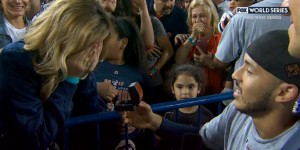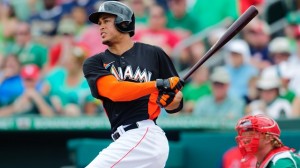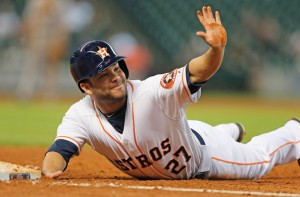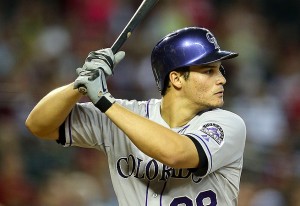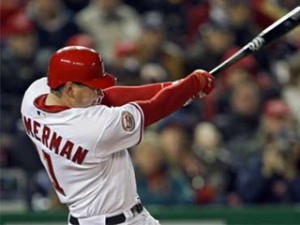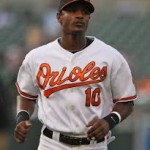What a World Series! I predicted Houston would win in 6 primarily because I thought Kershaw would get the series back to LA by winning Game 5, but Verlander would shut it down in the 6th game. Didn’t quite happen that way, with both guys pitching well but not getting the result that night. In the end, I honestly think the better team won this series, and Houston’s bottoming-out gambit has now paid off with the first title in their existence.
What i’m wondering about now is this: two of these World Series games we just saw were just amazingly good games, featuring massive comebacks, late inning heroics, clutch homers, walk-off hits.
Where, if anywhere, do they rank in the pantheon of “Greatest Games?”
I like to use as a jumping off point the excellent MLB.tv series “MLB’s 20 Greatest Games.” A link to their web page with videos of each game is here. The list is here:
- No. 20: May 17, 1979: Phillies @ Cubs; Phils, Cubs combine for 45 runs. This is the only regular season game on the list and for good reason; the first inning alone had 13 runs scored.
- No. 19: Oct. 4, 2003: Giants @ Marlins; Ivan Rodriguez tags out Eric Snow as he tries to bulldoze Pudge at the plate to end the game and send the Marlins to the World Series.
- No. 18: Oct. 12, 1980: Phillies @ Astros; Phils win battle in 10th to win the NLCS with an epic comeback over Nolan Ryan.
- No. 17: Oct. 17, 2004: Yankees @ Red Sox; Dave Roberts‘ stolen base and David Ortiz‘s walk-off homer cap the Boston win, an epic part of the Boston comeback from 3-0 down in the 2004 ALCS.
- No. 16: Oct. 6, 2009: Tigers @ Twins; Twins win a game 163 sudden death playoff game for the AL Central title.
- No. 15: Oct. 8, 1995: Yankees @ Mariners; Edgar Martinez hits “The Double” to get a walk-off win in the ALDS, capping a 10th inning comeback as a young Ken Griffey Jr absolutely flies around the bases to score from first.
- No. 14: Oct. 23, 1993: Phillies @ Blue Jays; Joe Carter‘s walk-off WS homer foils a great Philly comeback.
- No. 13: Oct. 26, 1997: Indians @ Marlins; Edgar Renteria wins it for Fish in a World Series game 7 classic.
- No. 12: Oct. 31, 2001: D-backs @ Yankees; Tino Martinez ties it with a 2-out, 2-run homer in the bottom of the 9th and Derek Jeter hits first November homer and earns himself the nickname for which he’s continued to be known.
- No. 11: Oct. 2, 1978: Yankees @ Red Sox; Bucky Dent‘s improbable 3-run homer caps a massive October collapse for Boston and continues the legendary rivalry between the teams.
- No. 10: Oct. 15, 1988: Athletics @ Dodgers; Injured slugger Kirk Gibson hits a pinch hit walk-off home run off of the dominant Dennis Eckersley for one of the most magical home runs in baseball history.
- No. 9: Nov. 4, 2001: Yankees @ D-backs; Luis Gonzalez floats a ball over the drawn-in infield against Mariano Rivera to win a classic Game 7.
- No. 8: Oct. 12, 1986: Red Sox @ Angels; Dave Henderson hits an improbable 3-run homer in the 9th to help Boston come back from 1-out away from elimination to eventually beat the Angels in the 86 ALCS.
- No. 7: Oct. 14, 2003: Marlins @ Cubs; The infamous Steve Bartman game, which overshadowed an utter collapse by Mark Prior, Alex Gonzalez, the Cubs bullpen AND Kerry Wood the following day to continue the Cubs curse that lasts til today.
- No. 6: Oct. 16, 2003: Red Sox @ Yankees; Aaron Boone suddenly homers off Tim Wakefield in extra innings to end a classic ALCS game 7 between the bitter rivals.
- No. 5: Oct. 15, 1986: Mets @ Astros; Mets win in 16 as Jesse Orosco put in the relief performance of a lifetime.
- No. 4: Oct. 14, 1992: Pirates @ Braves; the injured Sid Bream barely beats Barry Bonds‘ throw to score the series winner and effectively send the Pittsburgh franchise into a 20 year tailspin.
- No. 3: Oct. 25, 1986: Red Sox @ Mets; Probably the most “infamous” game of all time, especially to Boston fans, as Bill Buckner‘s error follows a series of mishaps by the Red Sox pitching staff to turn a 10th inning 2 run lead into a game 6 loss.
- No. 2: Oct. 27, 1991: Braves @ Twins; Jack Morris‘ seminal performance; a 1-0 10 inning shutout over the Braves in perhaps the best Game 7 of any World Series ever.
- No. 1: Oct. 21, 1975: Reds @ Red Sox; the game forever known for Carlton Fisk waving his walk-off homer fair, but which should be known for the unbelievably clutch Bernie Carbo 8th inning homer to tie the game and enable the extra inning fireworks.
That’s a great list. It technically should have been titled “Greatest 20 games of the last half century” since it skipped the classic 1960 Mazeroski game.
Since this series debuted, we’ve seen several really good post season games that I thought should be considered
- 2011 Game 6: I thought it was a top 5 game when I saw it live, and i’d put it 4th or so on the above list.
- 2016 Game 7: I thought it was perhaps in the 5-10 range, putting it just after the Bartman game at #8 in the above list.
- 2011 final Game of the season: Yankees@Rays: the Red Sox had blown a 9-game lead as of the beginning of the month, culminating with a blown save in the 9th of the final game of the season to open the door for Tampa. meanwhile, Tampa was hosting the Yankees … and were down 7-0 in the 7th inning before rallying to tie the game, then win it in the 12th on a solo walk-off by super star Evan Longoria just minutes after hearing that the Red Sox had lost. See the video to watch it unfold; its pretty unbelievable.
- 2007 NL Wild Card tiebreaker: Colorado beats San Diego 9-8 in 13 innings by rallying from 2 runs down to walk-off in a controversial play at the plate.
Well, where do you possibly put the two crazy games we just saw in this series?
- 2017 Game 2: Houston scores in the 8th and 9th to push the game to Extras, blasts two solo homers in the 10th only to have LA tie the game in the bottom of the 10th. Eventual MVP Springer blasts another homer in the 11th, and LA counters in the bottom of the 11th but falls short. 7 of the 13 runs scored in the game occurred in the extra innings and the teams set a WS record hitting 8 combined homers.
- 2017 Game 5: Houston made up deficits of 3 and 4 runs early, LA scored 3 in the 9th to force extras, and Houston walked-off a win in the 10th to win a crazy 13-12 5 hour marathon. As ESPN’s David Schoenfield said, “you thought game 2 was crazy? Try game 5.“
First off; were these truly “great games?” One game was 7-6, the other was 13-12. Both featured a ton of hitting and offense obviously, but not a ton of good pitching necessarily. LA used NINE pitchers in Game 2, and the teams combined to use 14 pitchers in game 5 with neither starter getting out of the 5th. Game 5 in particular featured both team’s Aces (Kershaw and Keuchel), both former Cy Young winners who both got blasted, and both team’s best reliever (Jansen and Devenski) got hit hard as well. Some people think a “great game” includes transcendent performances on both sides of the ball, and both of these games were not the case.
Would you put either game into the above list? I would. I’d probably choose Game 2 over Game 5 given its late-inning heroics and slightly better pitching, and I’d probably put it in the 15-20 range in the above list.
What do you guys think?
